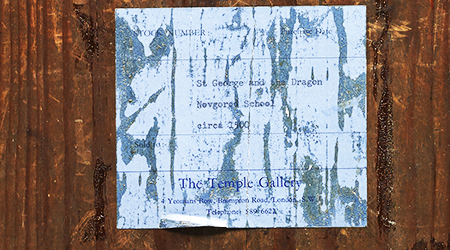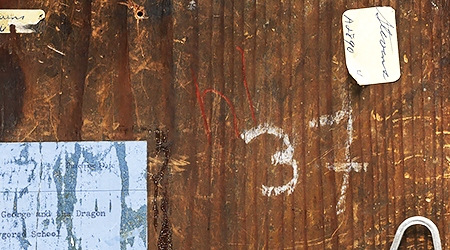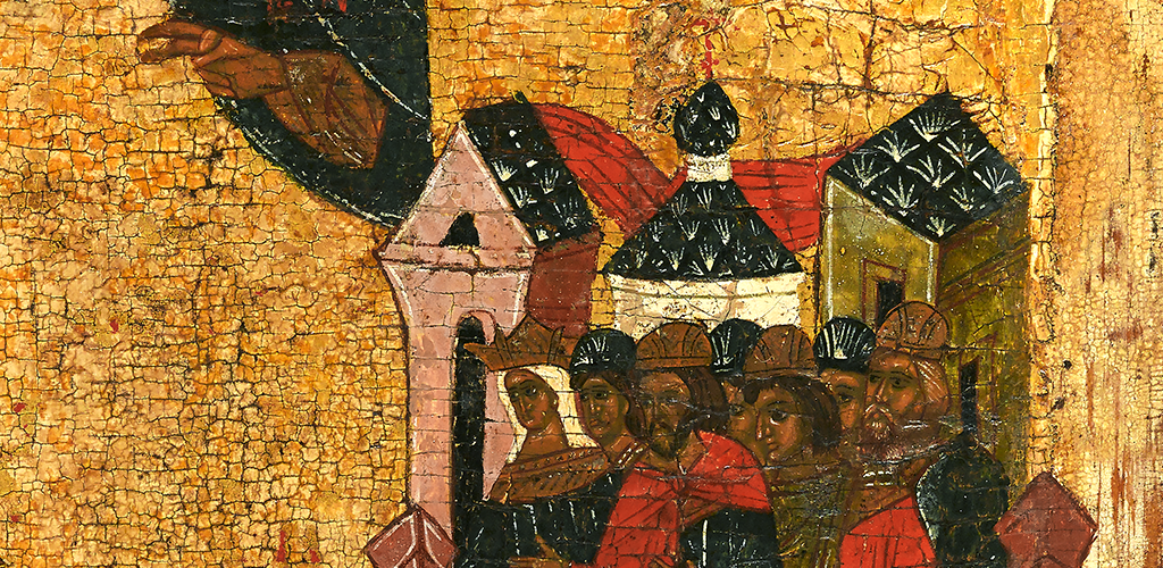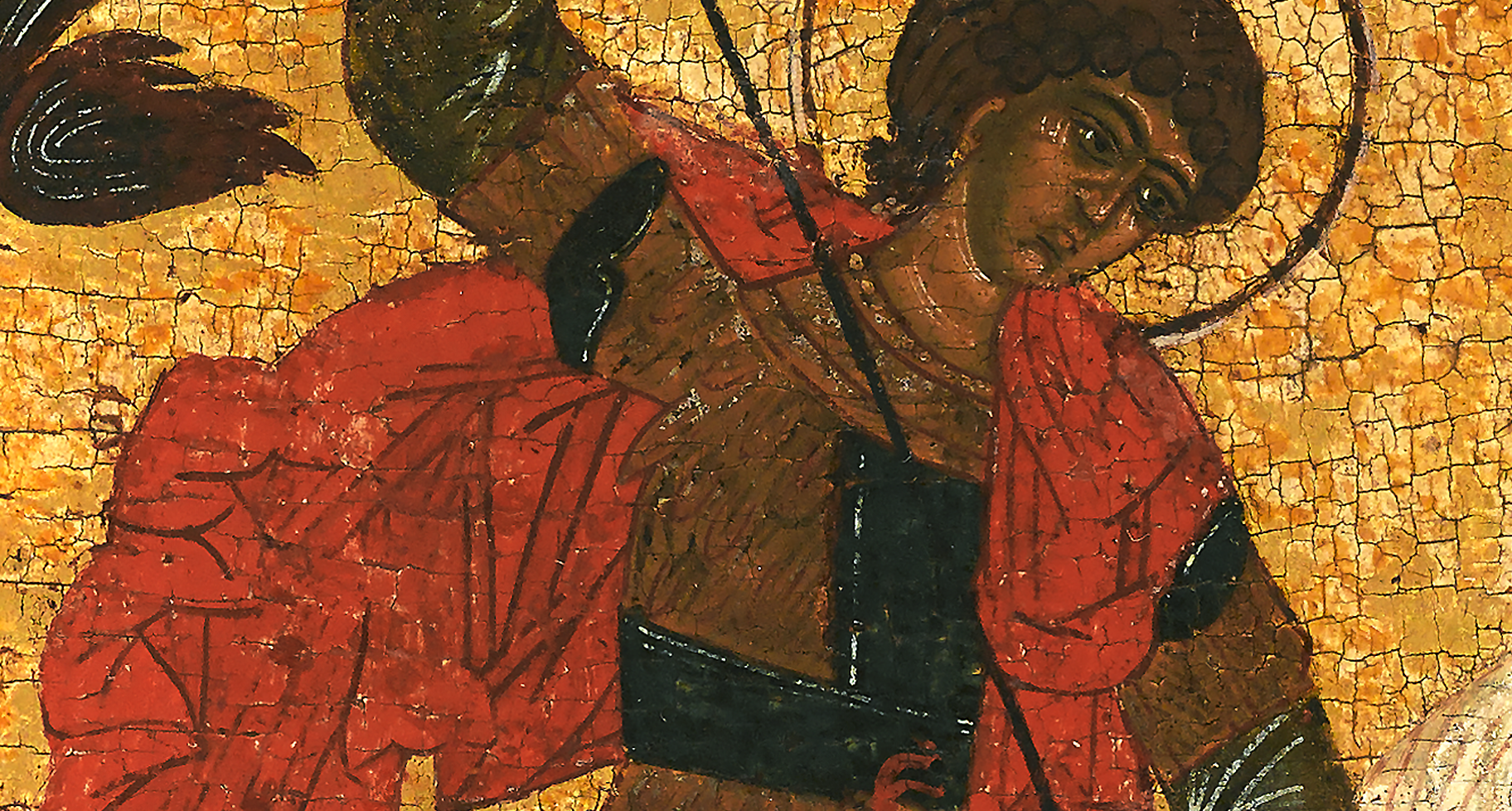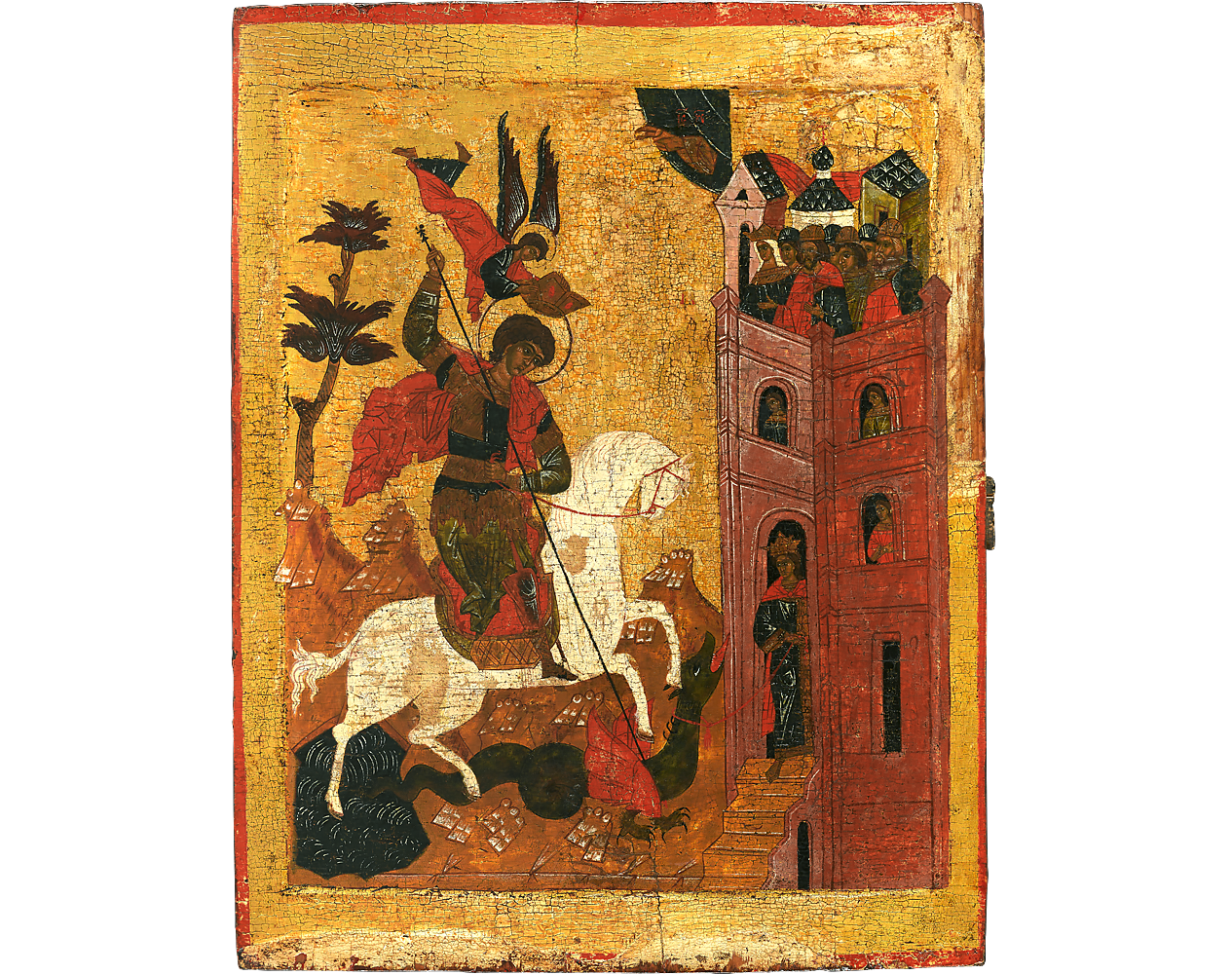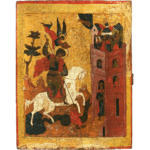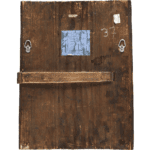Provenance
The Rockefeller Collection
Clarence Woodard Collection, Orinda, CA
Exhibitions
The Gallery of Modern Art, New York, NY, 1966-1967
Masterpieces of Byzantine and Russian Icon Painting 12th–16th century, Temple Gallery, London, 30 April – 29 June 1974
Icons and Easter Eggs of Imperial Russia, Hearst Art Gallery, St Mary’s College, Moraga, CA, 1995
Russian Art of the Nineteenth Century: Icons and Easter Eggs, Haggerty Museum of Art, Milwaukee, WI, 19 April – July 28, 1996
Bibliography
R. Temple, Icons, A Search for Inner Meaning, 1982, No.37, illustrated, pp. 88-89, 138
A. Ruzhnikov, A. Harlow, Icons and Easter Eggs of Imperial Russia [exhibition catalogue], Hearst Art Gallery, Morgana, 1995, No.2, p. 4
Russian Art of the Nineteenth Century: Icons and Easter Eggs [exhibition catalogue], Haggerty Museum of Art Exhibition Catalogue, Milwaukee, 1996, No.3, p. 17
The icon is painted in rich colour typical for the Novgorod school. St.George on a rearing white charger, shown against a rocky landscape, slays the winged monster as it appears from the lake; the hand of God emerges from a segment of heaven on the top right of the composition and blesses the saint. An angel crowns St.George with a martyr’s crown, symbolising the victory of good over evil. The tower on the right represents the city, the king and inhabitants witness the battle.
Veneration of St.George began in the 5th century in the Byzantine Church, St.George is found in Russian art in the 11th-century frescoes of the St.Sophia Cathedral in Kiev. The story of St.George and the dragon is described in The Golden Legend. According to it, the event took place in Cappadocia in the 3rd century. The local inhabitants were pagans who worshipped a terrible dragon that lived in a lake nearby. To appease the dragon every day two lambs were sacrificed, to further please the creature humans were offered and lots were drawn to choose the victims. On one occasion the daughter of the local ruler drew the unlucky lot. As it happened St.George promised to kill the dragon provided that the citizenry of the city become Christians. He engaged the dragon in mortal combat and slew it. The king and all of his people were so awed by the power of the Lord that they converted to Christianity.
St.George killing the dragon is one of the most popular subject matters of Christian art. In Russia, the first depiction of the miracle is preserved on the walls of the church of St.George in Staraya Ladoga (circa 1167) near Novgorod.
St.George is a patron saint of Cappadocia, Georgia, Muscovy and England where his cult was introduced by Crusaders returning from Palestine. His principal feast day is April 23rd.
